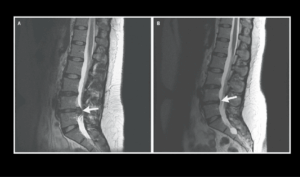Demystifying Stretching: Are They Really Effective?
Stretching has long been considered an essential practice for improving flexibility, preventing injuries, and relieving muscle pain. From physical education classes to sports training programs, we have been taught that stretching is an integral part of any exercise routine. However, in recent years, a growing debate within the scientific community has questioned the actual effectiveness of stretching and the benefits attributed to it. In this article, we will explore the scientific evidence behind stretching and debunk some common myths surrounding it.
What is Stretching?
Stretching consists of exercises designed to lengthen muscles and connective tissues, thereby increasing flexibility and the range of motion in joints. They are mainly classified into two categories: static stretching, which involves holding a position for a period of time, and dynamic stretching, which involves controlled, repetitive movements.
The Myth of Injury Prevention
One of the most widespread beliefs about stretching is that it helps prevent injuries, especially before sports activity. However, several studies have shown that static stretching performed before exercise does not significantly reduce injury risk. In fact, some studies have suggested that static stretching before exercise may even decrease muscle strength and power, potentially increasing the risk of injury.
Controversy Over Sports Performance
Another common myth is that stretching improves sports performance by increasing flexibility and mobility. While stretching can temporarily increase flexibility, it is unclear if this translates into improved performance. In fact, some studies suggest that static stretching before intense physical activity can reduce muscle strength and jumping ability, which could negatively impact performance.
Limited Evidence on Pain Relief
Stretching is often recommended as a way to relieve muscle pain and improve function in people suffering from certain conditions, such as chronic lower back pain. Although some studies have shown promising short-term pain reduction, the overall evidence supporting stretching as an effective pain relief method is limited and inconclusive.
What to Do Instead of Stretching?
Rather than focusing exclusively on stretching, scientific evidence suggests that other approaches might be more effective for improving sports performance and preventing injuries. For example, dynamic warm-ups—which involve controlled, active movements that mimic the upcoming sport or physical activity—have proven more beneficial for performance and injury prevention than static stretching.
Conclusion
In summary, although stretching has been widely accepted for a long time, the scientific evidence on its effectiveness is mixed and, in many cases, insufficient. Static stretching before exercise does not appear to offer significant benefits in injury prevention or sports performance enhancement. Instead, it is recommended to focus on dynamic warm-ups and specific exercises tailored to individual needs and goals.
It is important to remember that before starting any exercise or stretching program, consulting a healthcare professional, such as a physiotherapist or certified trainer, is advised to obtain personalized and safe guidance. Science continues to study the effects of stretching on the human body, and our understanding of its role in health and performance may continue to evolve in the future.











